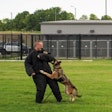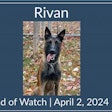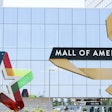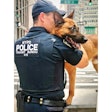Loco wears his scar almost like a first-place ribbon. The curved line of flesh that arcs around his left, eye like a backward "c" has been his badge of honor for years, the mark of a gangster who has made it, who is not afraid to put himself in harm's way for the glory of the hood or the reputation of his gang.
Ask him, and he will tell you all about the knife fight that almost cost him his eye; the fight where he left his opponent, a rival gang member, bleeding to death behind an alley trash can. Ask him, and he'll tell you that the police have been looking for whoever did that one, but haven't been able to identify him yet. Ask him, and he'll laugh, saying that there are a lot of gang-bangers with scars out there; they'll never get him because he's just another face in the crowd.
In another time, another era, Loco may have been right. He would have laid low for a while, melting into the woodwork until the heat cooled and he, once again, became just another gang member in a city full of them. His name, physical features, gang affiliation and related information in a police officer's notebook would eventually be transferred to a file folder.
And as long as Loco stayed out of the spotlight of police interest, he probably would never be connected with the witness reports that said the killer was a gangster with a scar on his face. But this is the '90s, when the power of a computer program can take a little thing like Loco's scar and turn it into his downfall.
File it under "G"
Intelligence, a curious alchemy of information and intuition, is at the root of almost everything that a police officer does. Every contact he initiates, every arrest he makes is based on some form of intelligence-knowing what's true or possible. And intelligence comes from details, those slippery little shreds of information that are part and parcel of a working cop's day. "It's all about what you know," says a Los Angeles police officer.
Originally, all intelligence was paper-based. An officer or investigator made notes in a notebook, filled out field interview cards, took photographs and typed up reports, all of which ended up filed away somewhere. If you wanted to access any of that information, you went to the files, that great morgue of file cabinets that became the main repository of most law enforcement intelligence. Hand-searching was slow and time-consuming, taking an officer away from the street and tying him to a desk, but for the most part it was effective.
Police departments today still run chiefly on paper, and paper-based records remain an important tool for law enforcement officers. Filed, sorted and cross-referenced, they are available to be searched and studied is by any officer with the time to do so.
But in the business of law enforcement, time is often a precious resource. The faster you produce the needed information, the quicker you can make an arrest. And with both the crime itself and the number of criminals on the loose growing daily, some little detail, some vital nugget of knowledge that may provide a connection is bound to be lost or simply overlooked. It would take an army of analysts years to catalog and cross-reference details found in reports by hand.
Fortunately, technology has stepped in to do what mortals cannot, and the result is revolutionizing the way cops track criminals. Nowhere is this more apparent than in gang investigations.
Putting two and two together
If police departments run on intelligence, then gang units run on tiny details, those basic facts from which intelligence is ultimately derived. For a gang unit officer, much like any other police investigator, finding out who did what to whom involves threading together disconnected pieces of information to form a coherent and plausible lead.
The pieces may be as diverse as a patrol officer's report of gang activity, a street-crime unit's field interview cards and a detective's interrogation report, all of which may contain bits of intelligence, mere mentions of facts on gang crime that could be of value to a current or future investigation.
The patrol officer's report, for example, will eventually make it to the gang unit office, but will the right investigator see it, and will he see it in time to make use of it? And if he sees it, will he be able to record it in his memory, sort it, remember it, connect it and call it forth some days, weeks or months down the line when it could be valuable? It's a hit-or-miss proposition and one that shouldn't be left solely to a fallible human mind.
Now, with the help of technology, putting together a lot of disconnected pieces isn't such a Herculean task. Supplementing and, in many cases, enhancing the cops' work are dedicated computer programs that take all those bits of information and make them searchable. For a law enforcement officer, it's like having the collective minds of the entire police department focused on one investigation.
Though computer databases are nothing new to law enforcement, their true worth to gang units are only now being realized. With the spread of gangs and the sheer growth in the number of gang members, accurate intelligence is vital to the working police officer. Unfortunately, no nationwide central database of gang information exists, a fact that forces individual departments to create and maintain their own records.
Computerized gang-tracking methods are as diverse as the sun and the moon. Some departments rely on very basic, commercially available databases, some use customized crime-analysis software and some invest in dedicated programs written specifically for gang tracking. The level of gang activity and the current budget situation are usually deciding factors for departments choosing a system.
It is the dedicated gang-tracking programs, however, that have evolved into tools that give investigators the most bang for their buck, providing interactive searchable indexes that place the power to solve crimes directly in officer's hands.[PAGEBREAK]
Tools of the Trade
Gang-tracking software does just what it implies: it provides a system for cataloging records on individual gang members composed of anywhere from one to 100 or more pieces of data, called fields.
Each field is composed of information such as name, date of birth, age, sex, race, height, weight, hair, eyes, moniker, scars, marks, tattoos, oddities and group/gang name. Far more specific information, such as known associates, areas of the city frequented, residences, vehicles, weapons history, arrest history, gang affiliations and law enforcement contacts, are also accessible.
Each record is an in-depth profile that provides gang investigators with solid information through which they can track gang members and gang activity in their jurisdiction. In addition, photographs of gang members, tattoos and graffiti links to individual files can be pulled from the database and printed out as needed.
All of the information within the database is searchable, meaning that an officer can enter basic facts and have the system return possible matches. Ken Williams, a Texas police officer, explains: "We can do a full-text search of the entire database. You can search for a male with a tattoo of a heart by just typing 'male tattoo heart' or 'male heart.' If there is anything there, regardless of where the information is in the database, you can find it in a matter of seconds."
This ability to work with minimal information often seems to generate leads out of thin air. In Los Angeles in 1993, a gang-related shooting victim was able to give police only a vague description of his attacker. The sole specific feature he remembered was the shooter's "lazy eye." Inputting this fact into the department's General Reporting, Evaluation and Tracking system (GREAT), officers brought up a match that led to an arrest.
For investigators, gang-tracking software provides the scorecard through which they can come to know the players in the area. With a profile in hand, crimes that would go unsolved for lack of leads may become viable cases, simply because information begins to fit. A witness reports seeing a vehicle leave the area of a drive-by shooting, but all he can give officers is a partial license plate number.
Investigators search the gang database, asking the system to return the names of any gang members who own or have been seen in a vehicle whose license plate number contains the numbers the witness reported. Suddenly, the field is narrowed down, and investigators have something concrete to work with.
"Software like this makes finding information very easy," says Williams. His department has provided laptop computers to all its patrol officers, proving that what works for field investigators also works for the patrol division.
"We decided to add the Gang Activity Tracking System (GATS) from Public Safety Solutions Inc. to each laptop. So every patrol officer has immediate access to the gang intelligence database," says Williams. "Any additions or changes are forwarded to the gang unit, where the master database is updated. All laptops are upgraded at least once each month with the latest gang database files. Our system also provides the ability to link photographs with the intelligence file."
For the officer on the street, this means the chances of identifying suspects and obtaining positive leads to solve a case are improved, as well as reducing the time required to make the ID. The intelligence is right there on the patrol unit's laptop, literally at an officer's fingertips.
Alan H. Peterson of USCCCN International Inc., a law enforcement software developer, says "the idea and the reality of empowering the police officer to identify a gang member or related offenders through visual associations, such as graffiti, tattoos and vehicles, is remarkable and much-needed as the numbers of gangs rise and gang crime and violence escalates."
From the largest department maintaining a full-time gang unit, to a small agency with a part-time gang officer, there is software available to do the job. Dana Systems Corporation of Arcata, Calif., even produces a shareware program called GANGFILE, which is available over computer networks like CompuServe.
Peterson, whose company created the GO/TRAK SHOCAP PC street gang and criminal offender intelligence software program, says "we have released an abbreviated version of our program at the request of many officers who are currently serving as one- or two-man gang units, using their personal PCs and laptops for agency use. These officers sought a more affordable, 'no-frills' version, leading us to create GO/TRAK Lite. This way they can at least start to compile data, upgrading to the full version with graphics, photo capture and more, at a later date, if needed."
Most programs available on the market can be tailored to meet the needs of a department, providing the flexibility to add or delete offender categories, link records to probation or parole files and flag violent criminals. The programs can stand alone on one PC or be networked throughout a department or region, as with the GREAT system. Input to GREAT files comes from all departments linked to the central-area node or main computer, and updates are regularly transferred to local systems.
Officers at one agency have the benefit of input from all local agencies connected to GREAT, improving information exchange. Additionally, each entry is audited to show where the input originated from and who else has inquired about an entry.
"One of the wonderful things about using GREAT is being able to see who else has made inquiries about the same person, usually officers in other departments," says Los Angeles Probation Ofc. Madeleine Kopp.
"We can see those queries listed and contact those officers for more details. I found many probation violations this way by doing regular queries on each person on my caseload," Kopp adds. "For example, a guy may have conditions against associating with gang members. I would see a query and contact that officer, finding out that my guy was with a group of gang members at midnight on the beach, and one of them had a gun or something. That would be a technical violation and possibly also a curfew violation.
"They also had conditions not to associate with particular people or go into particular areas, and these queries saved me from having to check Fls at various departments," says Kopp. "As more users come online to the GREAT system from outside the county and state, the fact that our probationers are being encountered in those jurisdictions will be vital to showing the court evidence that the person is blatantly violating the terms and conditions of probation."
Getting the goods
The formation of street gangs is not a recent phenomenon, but the tools law enforcement uses to fight back against them is. Technology has taken us from battered notebooks and stacks of Polaroids, to sleek laptop computers and photographs stored on disk. The change is both startling and satisfying.
Successfully prosecuting gang members is a difficult job and one that is accomplished only through the systematic legal documentation of their criminal behavior. Computer database and tracking systems like GO/TRAK and GREAT give departments a powerful tool to use, allowing patrol officers and investigators alike near-instant access to intelligence vital to officer safety and case management.
Gang unit officers facing the dual explosion of gang growth and the growth of technology are discovering that using one to fight the other is the modern answer. And gang members like Loco are learning that you can run, but you can never hide.
Laura E. Quarantiello is the author of "On Guard' How You Can Win the War Against the Bad Guys" (LimeLight Books) and a frequent writer on law enforcement topics.












